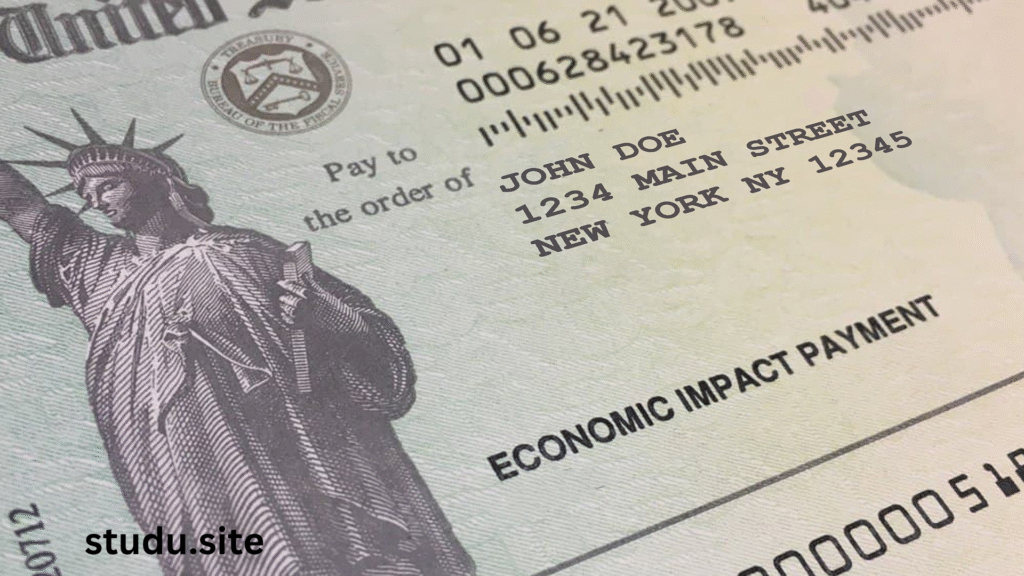Introduction to DOGE Stimulus Check Eligibility
The so-called “DOGE stimulus check,” or DOGE Dividend, has drawn attention far and wide with its promise of a $5,000 refund to American taxpayers. Proposed by James Fishback, Azoria’s CEO, and initially endorsed by President Donald Trump and Elon Musk, the initiative seeks to send out 20% of savings from the Department of Government Efficiency (DOGE) to qualifying households. But draconian qualification rules and enormous hurdles, including small savings and congressional clearance, have dulled expectations. As of June 16, 2025, this blog post goes into depth about DOGE stimulus check eligibility, discussing who is eligible, how the program is different from previous stimulus initiatives, and the status of this ambitious proposal.

What Are DOGE Stimulus Checks?
The DOGE stimulus checks, or DOGE Dividend, are suggested one-time payments of up to $5,000 per tax-paying household, paid for by 20% of savings realized through DOGE’s cost-cutting efforts. DOGE, formally the U.S. DOGE Service Temporary Organization, was created by Trump’s executive order of January 20, 2025, to save federal money, simplify regulations, and bring modernity to government functions. James Fishback’s Feb. 2025 plan on X proposed that 20% of DOGE’s estimated $2 trillion in savings—$400 billion—be distributed to 78 million taxpaying families, or $5,000 per family. Another 20% would be used to pay down the $36 trillion national debt.
However, DOGE’s reported savings of $175 billion by May 2025 fall far short of the $2 trillion goal, reducing potential payments to around $2,200 per household. The proposal requires congressional approval, and its future remains uncertain due to economic and political hurdles.
DOGE Stimulus Check Eligibility Criteria
1. Federal Income Tax Net-Payers
The checks are restricted to households that are “net-payers of federal income tax,” or those who pay more in federal taxes than they get in federal benefits. As per the Pew Research Center, the majority of Americans who make below $40,000 per year are not required to pay federal income tax after deductions and credits and are thus not eligible. Fishback explained to Newsweek that this emphasis minimizes inflation risks since net taxpayers will tend to save over consume the money.
2. Per-Household Distribution
The refund is given per household, not per person. This encompasses joint filers and single filers who qualify as net-payers. A married couple filing a joint tax return, for instance, would receive one $5,000 payment (or less, based on savings), not two. This method replicates the structure of tax refunds but reduces the number of payments.
3. Social Security Recipients
Households that receive Social Security benefits are potentially eligible if they are subject to the federal income tax. The IRS observes that as much as 85% of Social Security benefits can be taxable if overall income from Social Security benefits, wages, and other sources is above specified levels. Women explained on X that a two-person household with both recipients of Social Security filing jointly and subject to the federal income tax would receive one refund.
4. Exclusion of Undocumented Immigrants
Fishback reinforced to Newsweek that illegal immigrants, even tax-paying ones, do not qualify. He added, “Illegal immigrants are never going to get a DOGE dividend. They did not come into this country legally. They do not pay into the system the way that U.S. citizens do.” This leaves out millions of tax-paying illegal immigrants, even though they contributed $59.4 billion in federal taxes in 2022, according to the Institute on Taxation and Economic Policy.
5. Workforce Participation Incentive
Fishback floated the idea that the checks might encourage employment because the recipients must file a federal income tax return and pay taxes for 2025 to receive one. He explained to Steve Ram’s podcast, “If you’re a working-age man who isn’t working right now, and you know there’s a chance of a DOGE dividend check… that’s a big motivator.”
Major Distinctions from Previous Stimulus Checks
The DOGE stimulus checks are quite different from COVID-19 stimulus payments:
-
Funding Source: DOGE checks would be funded purely out of savings, unlike deficit-financed COVID checks, lowering inflation risks.
-
Targeted Distribution: COVID checks were paid to most people who earn less than $75,000 (or $150,000 for couples), while DOGE checks aim at net taxpayers, excluding poor households.
-
Purpose: COVID checks are presented as an effort to spur spending, while DOGE checks are cast in the mold of refunds to compensate taxpayers and restore faith in government competence.
Challenge to DOGE Stimulus Check Eligibility and Implementation
The suggestion comes with overwhelming challenges that affect eligibility and feasibility:
Congressional Approval
Any payment is subject to congressional approval, and no bill has yet been filed through June 2025. House Speaker Mike Johnson was skeptical at the 2025 Conservative Political Action Conference, making the $36 trillion debt the priority over checks.
Limited Savings
DOGE’s $175 billion in savings falls significantly short of the $2 trillion benchmark, even cutting checks down to $430 per household. Bloomberg’s estimate for savings is as low as $8.6 billion, or $21.50 per household. Partnership for Public Service estimates DOGE’s actions likely have cost $135 billion in lawsuits and lost productivity.
Inflation Fears
Economists such as Sarah Maitre caution that checks would accelerate inflation, like the payments of the COVID era. Fishback contends that targeted helps avoid this, but doubt exists.
Musk’s Exit
Elon Musk departed DOGE in May 2025 because of a 130-day cap on special government employees, slowing down momentum. Acting administrator Amy Gleason’s leadership isn’t as visible.
Scams and Disinformation
Phishing emails and fake PACs have taken advantage of the hype, muddying eligibility expectations. The IRS and Treasury have released no formal guidance.
Public Opinion and Political Support
A 46% strong support was found by J.L. Partners polling for the checks, including 60% of Republicans and 39% of Democrats. On Twitter, users such as @MentallyDivine condemned the omission of poor Americans, whereas others such as @SolomonJMart complained about delays. The concept has been used in Republican campaigns for fundraising purposes, yet no legislator has introduced legislation.
Current Status and Next Steps
As of June 16, 2025, DOGE stimulus checks are still a proposal and not legislative. Fishback informed NewsNation that he’s hopeful regarding an upcoming bill based on a fruitful discussion with lawmakers. Trump’s emphasis on budget balancing as well as the “One Big Beautiful Bill” indicates low priority. Taxpayers should watch doge.gov and IRS press releases, staying away from scams claiming payments. If taxed as refunds, the checks would probably be nontaxable; if taxed like dividends, they may be subject to federal taxation based on income.
Conclusiony
The $5,000 DOGE stimulus check plan presents an appealing vision to remunerate net taxpayers with government efficiency savings. Yet stringent eligibility requirements—excluding poor families and illegal immigrants—along with limited savings and congressional idleness render the checks doubtful in the short term. Fishback’s concept seeks to encourage work and faith in government, but economic and political conditions present formidable obstacles. Remain updated through official outlets and address unconfirmed reports with skepticism.
